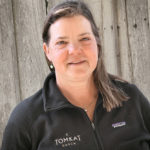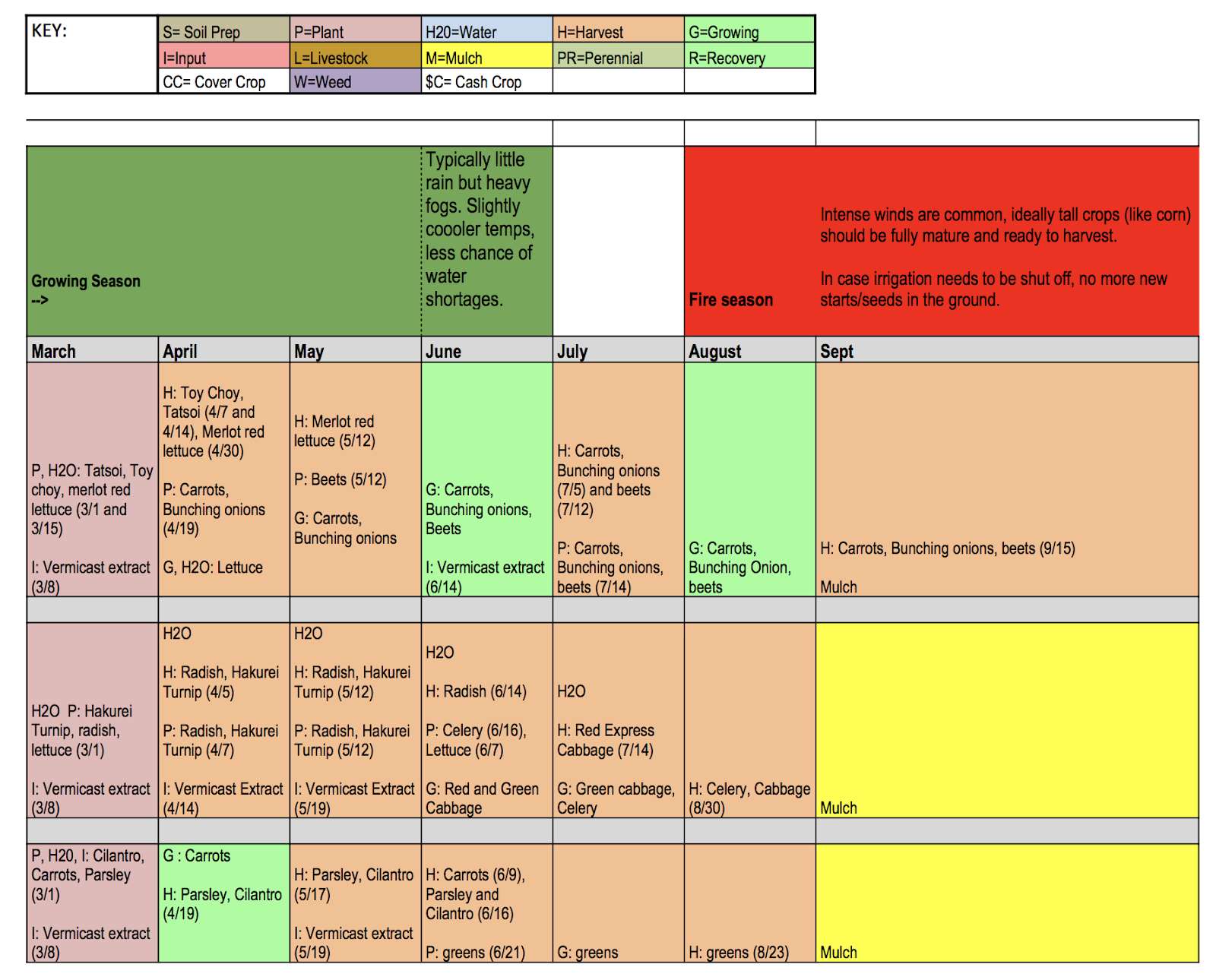Typically, landscaping at the ranch focuses on the care of flowers, orchards, and a modest vegetable garden.
‘No-Dig’ Gardening at TomKat Ranch

Applying our ‘home-grown’ finished compost to no-dig garden beds


04/30/2021
By: Andrea Hatsukami and Susan Hadacek
Although the garden’s small size allows us to be extremely specific on what and when we are planting, this method of planning can be easily scaled up to larger fields.
Typically, landscaping at the ranch focuses on the care of flowers, orchards, and a modest vegetable garden. Last year, however, as we began to see the impacts of COVID-19, we wanted to do more to address food insecurity in our community. We quickly identified a single-acre plot outfitted with a former hydroponics greenhouse and a perimeter deer fence, as the ideal location to start a market garden.
Preparing and maintaining farm ground can be hard work. To make it less strenuous for our two-person team, we decided to implement a ‘no-dig’ regenerative method of planting. To do this, we placed layers of flattened recycled cardboard boxes on the ground for weed suppression and spread a thick layer of finished compost over the top. The combination of increased moisture retention and microbial activity from the compost, along with the penetrative power of the plants’ roots easily breaks down the cardboard within the first month or two. For the beds, we used compost made of horse manure, bedding, and food scraps from the ranch. The no-dig method effectively grows vegetables while improving soil biology; last year’s growing season yielded 1,700 pounds of produce which we donated to a local food distribution program run by Puente, our community nonprofit resource center.
To prepare for this year’s growing season, we no-till drilled a cool season cover crop, more than doubled the number of no-dig garden beds, laid underground irrigation, prepped three new compost piles, and attended a Holistic Management International (HMI) crop planning course. With the help of our HMI instructors and classmates, we built a planning chart that details dates for planting, inoculating, harvesting, etc for each month of the year.

Part of garden plan for March to September on rows 1 to 3
Organizing the garden planning chart felt similar to a logic puzzle. To start, we created a list of new produce that we wanted to grow this year as well as produce we knew would grow well based on our efforts last season. We then identified concrete parameters–factors outside our control–such as the conditions associated with growing season and fire season (indicated in green and red boxes to serve as reminders of changes in water availability and weather). Once the concrete parameters were established, we planned the growing and harvesting schedules accordingly.
Although the garden’s small size allows us to be extremely specific on what and when we are planting, this method of planning can be easily scaled up to larger fields. The final step is to take notes on any changes from the original plan. As with any holistic grazing or cropping chart, there will always be deviations so keeping accurate records is key to informing and improving future planning sessions. Stay tuned to hear more updates on production and distribution as the season progresses.